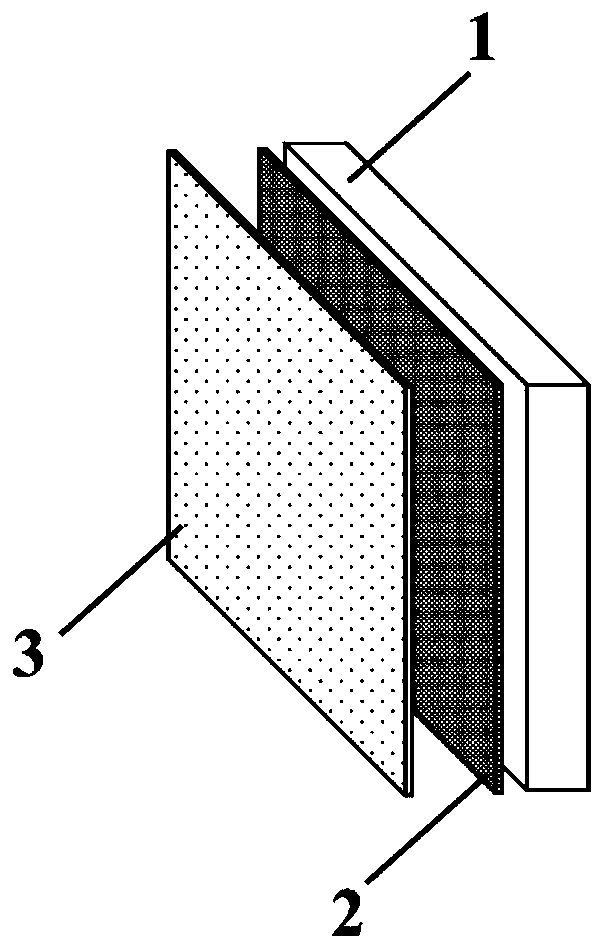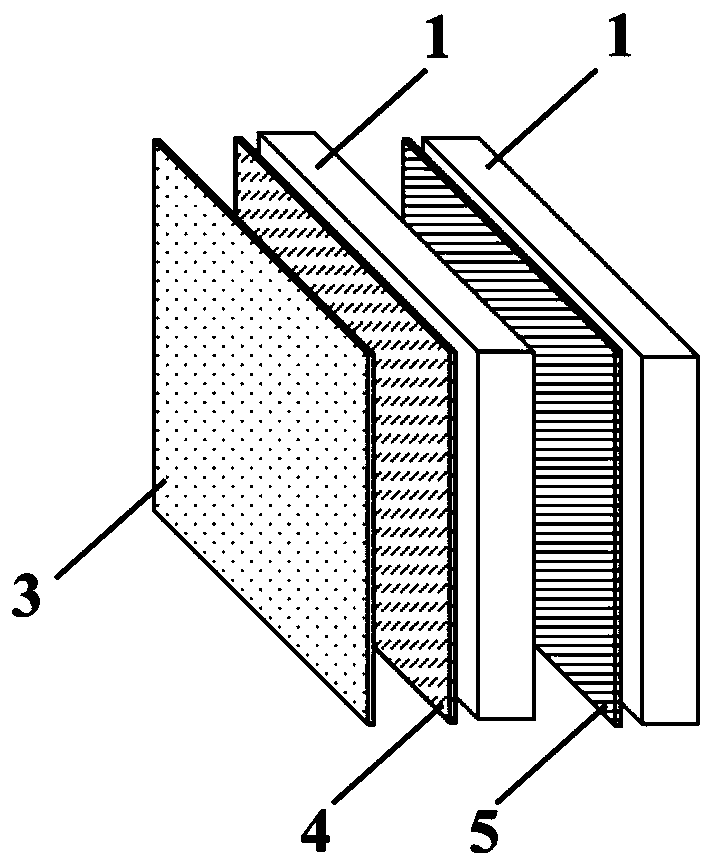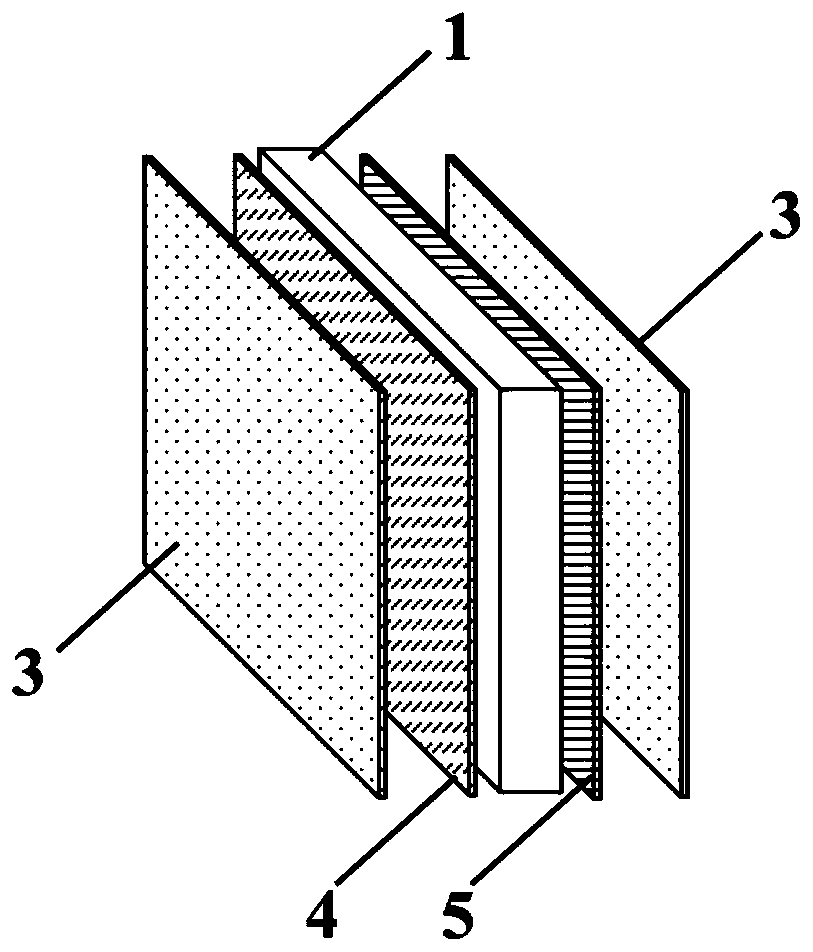Pure organic room-temperature phosphorescent material with multi-stimuli response characteristic, screening method and application
A multiple stimulus response, room temperature phosphorescence technology, applied in luminescent materials, fluorescence/phosphorescence, material excitation analysis, etc., can solve problems such as limited application scenarios, weak luminescence, and lack of material design strategies
- Summary
- Abstract
- Description
- Claims
- Application Information
AI Technical Summary
Problems solved by technology
Method used
Image
Examples
Embodiment 1
[0093] 4-Dimethylaminopyridine (DMAP) and 2,2-dinaphthylamine (Cdp) were used as donor and acceptor molecules, respectively.
[0094] 1) Weigh 1.2217g of DMAP and 2.7mg of Cdp and place them in a clean and dry beaker, slowly pour DMAP into the beaker containing Cdp, take a clean horn spoon and stir the poured samples evenly in a fume hood. Avoid squeezing or pressing the sample with the horn spoon on the wall of the beaker during the mixing process, until the sample is irradiated by an ultraviolet lamp (312nm or 365nm), the mixed material as a whole emits bright blue fluorescence (wavelength is 400-415nm), and there is no obvious white light point That is, the mixed material has been mixed evenly.
[0095] 2) The homogeneously mixed sample is a pure organic room-temperature phosphorescent material with multiple stimuli-responsive properties. Transfer the uniformly mixed sample to a sample bottle, and store it in an environment of ≤4°C after being protected from light.
Embodiment 2
[0097] 4-Dimethylaminopyridine (DMAP) and N-phenyl-2-naphthylamine (Cnp) were used as donor and acceptor molecules, respectively.
[0098] 1) Weigh 1.2217g of DMAP and 2.2mg of Cnp and place them in clean and dry beakers respectively, slowly pour DMAP and Cnp into the sample pool of a clean and dry stirrer, use a polytetrafluoroethylene material stirring rod, Start and adjust the stirrer speed to 150r / min. During the stirring process, avoid stirring rods and stirring blades touching the sample cell, so as not to stimulate the phosphorescent properties of the activated material. When the ultraviolet lamp (312nm or 365nm) irradiates the sample, the mixed material as a whole emits bright blue fluorescence (wavelength is 400-415nm), and there is no obvious white light point, that is, the mixed material has been stirred evenly.
[0099] 2) The evenly stirred sample is a pure organic room-temperature phosphorescent material with multiple stimuli-responsive properties. Transfer the...
Embodiment 3
[0101] Get the material gained in embodiment 1, cross 100 mesh sieves. Such as figure 1 As shown, the sieved fine powder sample is evenly coated on the paper material layer 1, and then the transparent packaging film 3 covers the sample layer and fixes the film and the paper material to ensure that the phosphorescent material layer does not leak.
[0102] The coating process can directly adhere the phosphorescent material to one side of the paper material layer, and the amount of sample adhered by the electrostatic adhesion of the paper material and the phosphorescent material can ensure visual capture of the luminescent signal.
[0103] The obtained three-layer composite structure can be directly applied to ordinary printing and thermal copying to realize phosphorescent anti-counterfeiting.
[0104] Further, by replacing the paper material layer 1 with commercially available thermal paper, the other steps are the same, and the obtained material can realize simultaneous therma...
PUM
| Property | Measurement | Unit |
|---|---|---|
| wavelength | aaaaa | aaaaa |
| strength | aaaaa | aaaaa |
Abstract
Description
Claims
Application Information
 Login to View More
Login to View More - R&D
- Intellectual Property
- Life Sciences
- Materials
- Tech Scout
- Unparalleled Data Quality
- Higher Quality Content
- 60% Fewer Hallucinations
Browse by: Latest US Patents, China's latest patents, Technical Efficacy Thesaurus, Application Domain, Technology Topic, Popular Technical Reports.
© 2025 PatSnap. All rights reserved.Legal|Privacy policy|Modern Slavery Act Transparency Statement|Sitemap|About US| Contact US: help@patsnap.com



